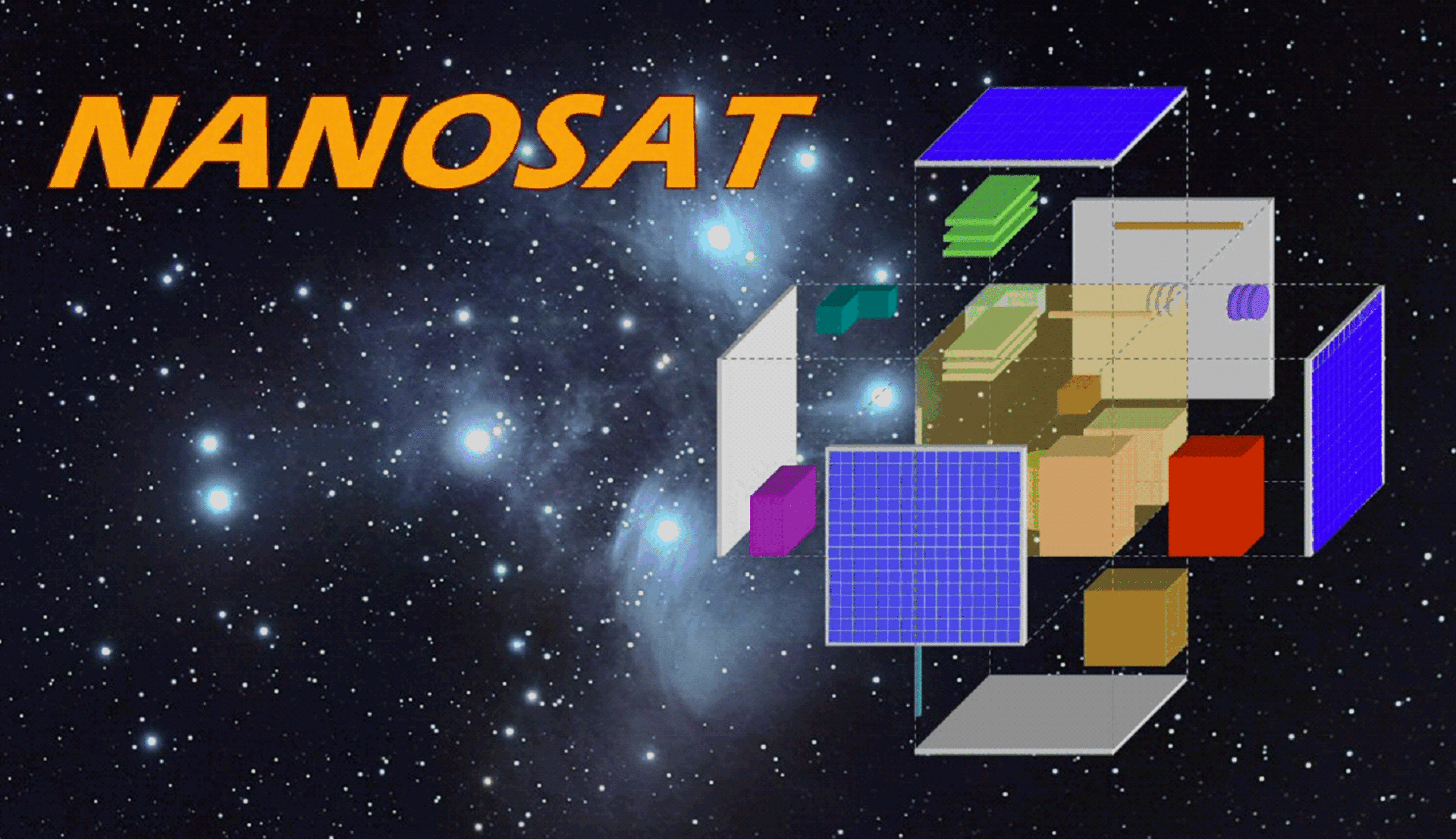Project NanoSat: Standardising satellite ingredients
Using an approach analogous to a Lego kit, the main structure of the proposed NanoSat design would be made up of a few base elements.
The core basic elements are a full size panel including embedded solar cells and a one-third size panel including pre-formed cut-out options for payloads or optical sensors. Any number of panels can be interlocked together, at any angle, to form almost any configuration with a guarantee that it will be capable to support up to 20kg mass.
Added to this is a set of miniaturised modular subsystem elements which can be used to construct the thermal control, attitude and orbital control systems (AOCS), propulsion, data handling, power and communication systems in a similar manner. The single largest mass item is a 1.25 kg fuel tank.

The individual parts would fit together on a ‘plug-and-play’ basis, with standardised mechanical mounting hole pattern and with computer chips – known as ‘application-specific integrated circuits’ (ASICs) - serving to provide a standard data and power interface to the satellite platform.
The communication and power interface systems connecting the platform would be radically overhauled to promote interchangeability.

"While current satellites house many kilograms worth of separate analogue signal wires connecting components, subsystems and the main computer together, our Highly Capable NanoSat would have a fully-digital bus consisting of just two rings of wires: one for data and one for power with all spacecraft elements – even thermal sensors – being conceived to be compatible with this.
“This is one of the essential elements towards achieving the modularity we need while still reducing mass and cost. Sometimes you have to increase the complexity and expense of one component in order to realise larger benefits at system level – this is a classic example of that in action.
"By marginally increasing the complexity and cost of traditionally analogue devices we are able to save kilograms of harness and weeks of assembly and test effort while simultaneously improving the configurability of the system.
“This modular ‘Highly Capable NanoSat’concept could reduce the time needed for mission assembly, integration and testing (AIT) down from a year and a half to just a few months.
“And, with the development of the right configuration tools, it could also cut the initial satellite design process - which can take up to five years at the moment - down to a rapid turnaround of a few months as well.”
Once the initial modules and tools have been developed and tested, the recurring cost reductions for future missions could be huge.
Prototype technologies unveiled

The project has tested the feasibility of shrinking down key aspects of spacecraft systems through ESA’s Basic Technology Research Programme (TRP) to prototype representative aspects of each subsystem, such as the miniaturised star tracker and digital Sun sensor designs needed for attitude and orbit control.
“Our digital Sun sensor is a very advanced design,” said Mr Airey. “Sun sensors determine satellite attitude by checking their orientation relative to the Sun. Our design is accurate, cheap and robust.

"We have achieved this by fitting its image sensor and processor on a single chip meaning it can be processed cheaply and in bulk. It can serve a wide variety of missions, including orbits closer to Earth where albedo glare is an issue as well as aboard spinning satellites.
“Industry has given the design an enthusiastic reaction, saying they would be interested in flying the sensor on full-sized missions if it is brought through into production. So we’re finding that technology developed for the NanoSat project can also find broader applications.”















 Germany
Germany
 Austria
Austria
 Belgium
Belgium
 Denmark
Denmark
 Spain
Spain
 Estonia
Estonia
 Finland
Finland
 France
France
 Greece
Greece
 Hungary
Hungary
 Ireland
Ireland
 Italy
Italy
 Luxembourg
Luxembourg
 Norway
Norway
 The Netherlands
The Netherlands
 Poland
Poland
 Portugal
Portugal
 Czechia
Czechia
 Romania
Romania
 United Kingdom
United Kingdom
 Slovenia
Slovenia
 Sweden
Sweden
 Switzerland
Switzerland





























